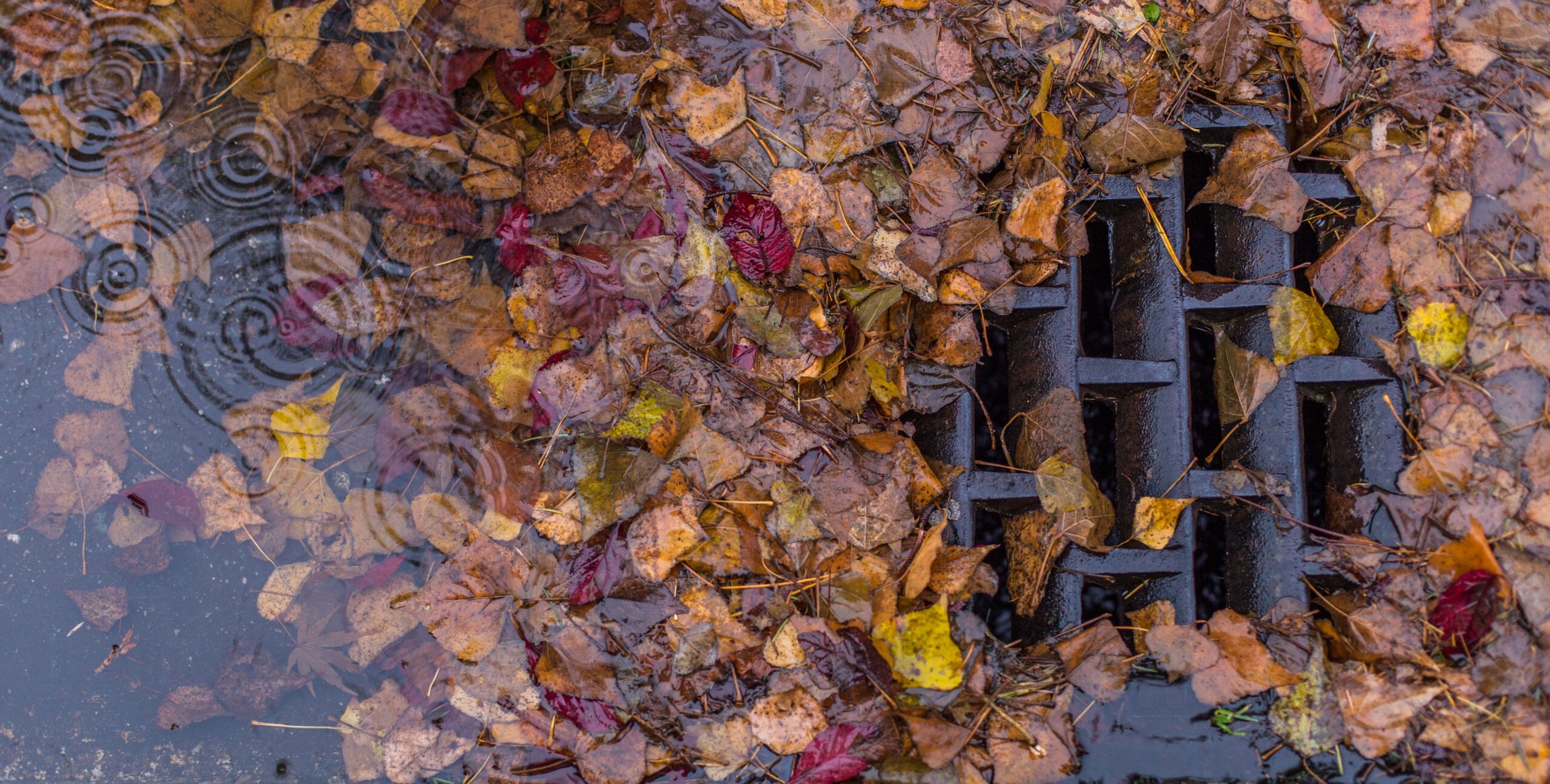
Leaves
Leaves, in excess, introduced into the storm drain system can impact local waterways. Leaf debris left, swept, raked, or placed on the ground or pavement can be carried by rain, residential water, or wind into our local creeks. Leaves deposited into creeks will begin to decay, using up the oxygen needed by fish and aquatic life, releasing nutrients that encourage weed and algae growth. Overly fertile water becomes cloudy and green – impairing swimming, boating and fishing, and makes water unsafe for swimming or drinking.
HOW ARE THE STORM DRAIN AND SANITARY SEWER SYSTEMS DIFFERENT?
The storm drain system transports rainwater to local creeks, rivers, and the ocean. This system was created to prevent flooding within communities and homes.
All water and materials that enter the storm drain system are untreated.
The sanitary sewer is a plumbed system that transports used water from buildings to a wastewater collection and treatment facility, where the water and sewage is treated.
If you see an outdoor drain and are unsure of its use, assume it is a storm drain and do not discharge wash water to it.
Clean creeks are important. They provide vital fish habitat, recreation, and add to the beauty of our city.
WHAT TO KNOW
The distance between your yard and the water’s edge is as close as the nearest storm drain.
Keep leaves out of the street is an important act of protection for the creeks and rivers in our watershed.
Leaves clog gutters and storm drains causing street flooding.
Leaves crushed by car tires and mixed with rain make a rich “nutrient tea” that flows along the gutter into storm drains. So, the fewer leaves that make it to the street, the better.
WATERSHED-FRIENDLY SOLUTIONS
Place leaves in your yard waste container which is collected weekly.
Compost leaves for a nutrient-rich fertilizer for your gardens.
Use a mower to chop leaves into small particles and apply directly to your lawn to enrich it.
Use chopped leaves as winter mulch for flower gardens.
BEST PRACTICES
Rake fallen leaves up, not out.
Avoid piling any leaves on the street.
Keep all fallen leaves and grass clippings on your property; off the sidewalks and out of the streets.
Make sure trees and shrubs don’t grow into the roadway.
Inform your landscaper of the proper disposal practices of yard waste and require them to remove the leaves from the street gutter as soon as possible.
Sweep / blow and collect all clippings after yard maintenance activities.
MULCHING
Set lawn mower to mulch and mow high. Taller grass retains moisture and catches grass clippings.
Mow often enough that grass and leaf clippings are shorter than the remaining lawn and can be trapped on your lawn.
STREET SWEEPING
City street sweepers and trash services are unable to pick up any leaf piles.
City street sweepers clean each street once a month.
Check with your local municipality for schedules.
Avoid street parking on sweep day.
Many communities have “littering” laws that govern yard trimmings which includes leaves. Some of these laws specifically prohibit deposit or accumulation of leaves, require disposal inreceptacles maintained for yard waste, and property owner responsibility to maintain that portion of the sidewalk, curb, and gutter in front of the property.
Releasing pollutants into the storm drain system or a waterway is prohibited by local ordinance, state, and federal law.
FOR ALL NON-EMERGENCY / NON-HAZARDOUS SPILLS
To report a Non-Hazardous spill, or for other useful phone numbers, see Spill Numbers informational reference sheet for your local agency contact information or visit: www.streetstocreeks.org/spill-numbers/
